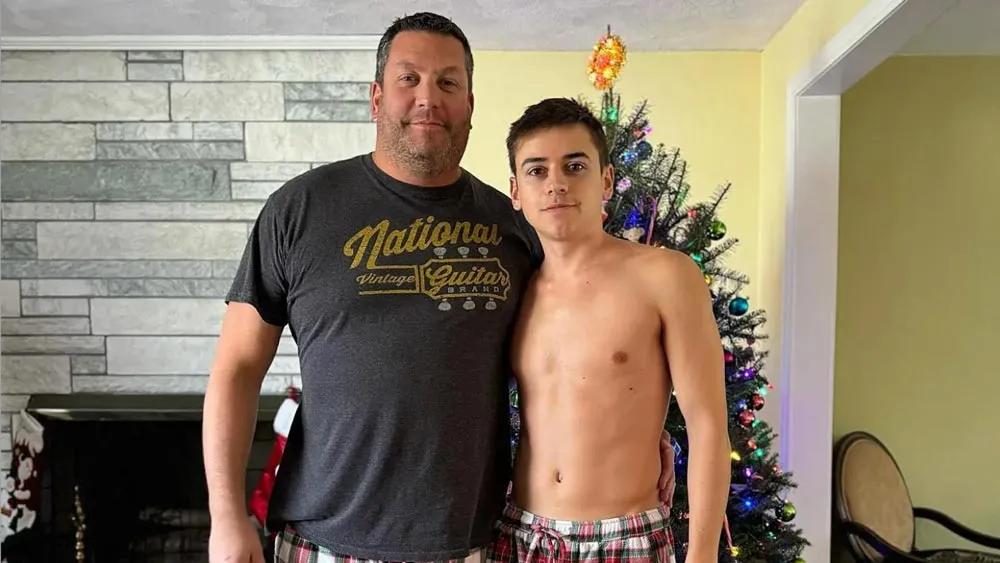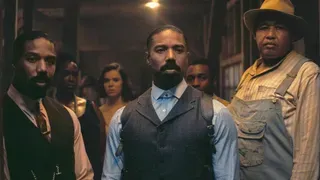September 1, 2020
Tourists Tote Dollars – And COVID – To U.S. Caribbean Islands
Heredia Rodriguez READ TIME: 6 MIN.
"What activities are open to do next week? Zip-lining? Jet ski? Anyone have recommendations on things still open?" a Facebook user asks.
"Stay home!" another user replies.
The Facebook group called "What's Going on St. Thomas?" has been flooded with pointed, exasperated comments urging travelers to stay away. This is a marked change. Before the pandemic, the exchanges between vacationers and island residents resonated with promises of excitement and fun. Now, tour operators from the mainland who administer the Facebook page quickly try to delete any expressions of anger.
In nearby Puerto Rico, the friction has spilled into real life. Media reports have detailed multiple episodes in which tourists, having escaped pandemic restrictions back home, became violent and destroyed store merchandise after being asked to wear a mask.
The COVID-19 pandemic has pitted economic interests against public health guidance all across the United States. Puerto Rico and the Virgin Islands feel this tension acutely, as both U.S. territories rely on tourism to generate revenue and provide jobs. Increasingly, locals have begun to wonder now if welcoming visitors to these islands is worth the risk.
Tourism represents more than half of the Virgin Islands' gross domestic product. In Puerto Rico, the industry accounts for 80,000 jobs and about 6.5% of the island's total economy.
But islanders are not only vulnerable to COVID-19's economic disruptions. Residents of both Puerto Rico and the Virgin Islands are diagnosed with chronic health conditions like diabetes and cardiovascular illness at higher rates than in most U.S. states, which puts them at higher risk for the virus's complications.
In short, the very industry that represents an economic lifeline for islanders threatens their ability to protect their health.
One Step Forward
When COVID-19 triggered alarms in late winter, Puerto Rico and the USVI adopted strong COVID prevention strategies before most U.S. states did.
In Puerto Rico, Gov. Wanda V�zquez issued an executive order March 15, effectively locking down the island by imposing a curfew, a stay-at-home order and business closures. The first coronavirus cases on the island were reported March 13.
Similarly, Virgin Islands Gov. Albert Bryan Jr. issued executive orders prohibiting hotels, villas and other accommodations from accepting leisure guests between March 25 and June 1. The area remained open to business travelers, flight crews, health officials, emergency personnel, government guests and residents. According to a March 20 Department of Health update, the territory had – at that time – six confirmed COVID cases and 43 pending test results.
Neither territory, however, was able to close its airports. Local officials do not have the authority to do so because the federal government regulates aviation.
"Part of the challenge of being a U.S. colony, in particular, is that, you know, we don't have control over our borders," said Hadiya Sewer, president and co-founder of St. JanCo: the St John Heritage Collective, a cultural heritage preservation and land rights organization on the small island of St. John, U.S. Virgin Islands.
Still, the aggressive measures – while effective – came at a price for residents like Melina Aguilar.
Before the lockdown, the 31-year-old entrepreneur worked as a tour guide for Isla Caribe, a company she founded that offers historical walking tours of Ponce, Puerto Rico. The stay-at-home order in March shut down Aguilar's business for three months and sequestered her in her house.
Aguilar said the sacrifice would have been worth it if the island could have maintained control of the spread by closing the border and enforcing the 14-day quarantine for travelers. It didn't work out that way. According to data from The New York Times, the seven-day average for cases on May 1 – while Puerto Rico was still in lockdown – was 42 cases per day. On July 1, the seven-day average was 102 cases. By July 15, the average was 233.
"We could've basically had the fruits of being locked up for three months," Aguilar said. "But now we're stuck."
Reopening the Gateway
By summer, both territories were itching to get back to business. With many overseas vacation destinations banning U.S. travelers, it seemed like the nearby mainland would be full of beachgoers, who, after living under stay-at-home orders for months, would be ready to travel – no passport required – to the sun and sand.
The U.S. Virgin Islands formally welcomed tourists back to its shores on June 1 – with caveats. Travelers from coronavirus hot spots needed to submit COVID-19 test information through an online portal to receive a negative result "certification code." Those who didn't were required to quarantine for 14 days or until they had documentation of a negative test result.
But locals and tourists alike said COVID enforcement measures haven't been consistent. Capt. Matthias Bitterwolf, owner of Antillean Yacht Charters on St. Thomas, said he delivered a boat to Puerto Rico and was not allowed off the vessel until local police could verify his COVID paperwork. His COVID status was not checked upon returning to St. Thomas.
The Virgin Islands' case counts soon began ticking up. Between June and mid-July, the case count increased by more than 3,500%, according to one NBC news report.
Gov. Bryan responded by issuing other executive orders to regain control of the outbreak, including prohibiting beach visits after 4 p.m. and not allowing patrons to stand or eat at bars located in restaurants. As of Aug. 24, the USVI had a total of 984 positive COVID-19 cases and 11 deaths.
Puerto Rico formally welcomed tourists on July 15 while still imposing some COVID-related restrictions. As in the Virgin Islands, officials required travelers to present documentation of a negative COVID test result upon arrival.
Dr. Victor Ramos, president of the island's medical association who is involved with the island's medical task force, said these decisions tended to expose the rift "between the medical task force that favors closing things and the economic task force that wants to leave everything open."
By July, the local economy was in shambles. The Department of Labor reported over 21% of the island's workforce was receiving unemployment assistance related to the pandemic in the week ending Aug. 1.
But rising case counts attributed to travel prompted local officials to encourage that only essential travel be allowed. As of Aug. 24, the island had recorded over 30,700 COVID cases and at least 395 deaths, according to the New York Times database.
Government data, though, indicated Puerto Rico's climbing case numbers were not being triggered by tourists. They are not the culprits, insisted Leah Chandler, chief marketing officer of Discover Puerto Rico, the island's official tourism website. Rather, the spread was linked to island residents coming home after visiting COVID hot spots like Texas and Florida.
Life on the Ground
Despite the global pandemic and the restrictions, both territories have experienced no shortage of vacationers. "We would have expected this to be a slow moment for us in terms of tourism," said Sewer. "It's very busy."
Still, the trend lines for COVID case counts weren't moving in the right direction for either territory, so it was no surprise when Puerto Rico closed days after reopening and the USVI followed suit on Aug. 19.
The underlying socioeconomic and health issues put residents in both places at high risk. It's not just the prevalence of chronic health conditions like diabetes and cardiovascular disease. The high number of multigenerational households in both areas complicates a family's ability to socially distance from its most vulnerable members. Roughly a quarter of the population in Puerto Rico and the Virgin Islands is age 65 or older, and poverty is widespread.
At the same time, both territories have limited health care infrastructure – making it difficult to envision that they can care for their own populations in an emergency let alone visitors who could become ill and island-bound if the virus were to surge.
Currently, the USVI has two main hospitals – one in St. Thomas and one in St. Croix – and a health clinic in St. John. The territory has 20 intensive care unit beds and about 100 one-time-use ventilators for its 106,235 residents, said Justa Encarnacion, the USVI's health commissioner. Each island has about 30 full-capacity ventilators.
In Puerto Rico, about 60% of the island's ventilators for adults were available as of Aug. 24. However, ICU beds are harder to come by, said Ramos. They are filled with COVID patients and those whose conditions worsened after avoiding care out of fear of catching the virus, he said.
The string of problems that have besieged these islands magnifies the effects of the pandemic. That includes debt crises and infrastructure damage from hurricanes and earthquakes. Island residents also fear the possibility of battling a hurricane and a coronavirus outbreak at the same time – a reality that they've already confronted when COVID hampered the USVI's emergency management agency's ability to distribute sandbags ahead of a storm in late July.
Colorado State University hurricane researchers predict an "extremely active" 2020 Atlantic hurricane season.
"At this point, we literally have disasters layered on top of disasters," said Sewer, of the St. John's Collective.
Still, Joseph Boschulte, tourism commissioner for the Virgin Islands, is cautiously optimistic about finding a balance between health and economic interests.
"We appreciate the concerns of our tourism partners and stakeholders," he said. But with the spike in cases, he said, "we must reset, take stock, safeguard human life and prepare for restarting our tourism economy at a later date."
Subscribe to KHN's free Morning Briefing.






